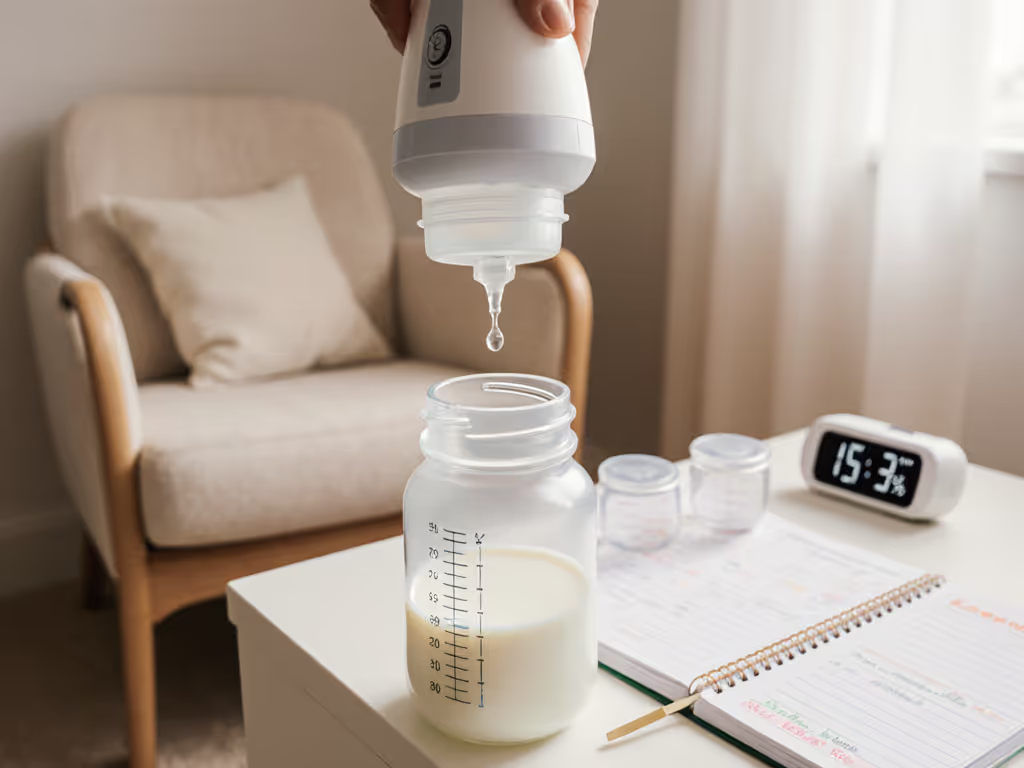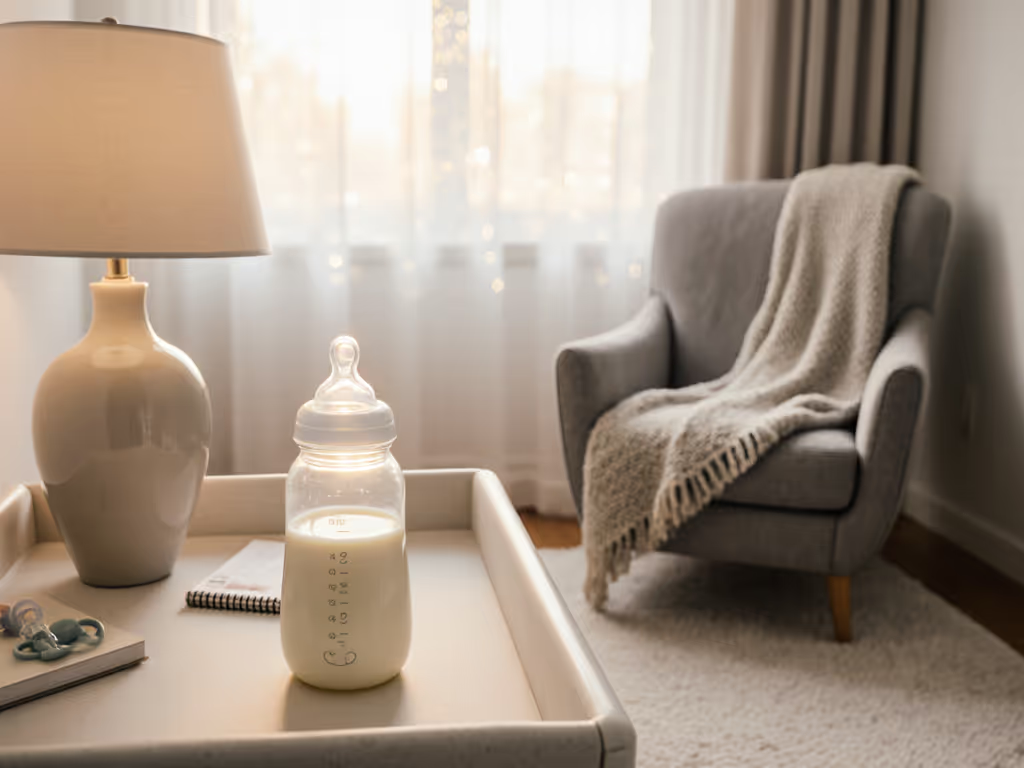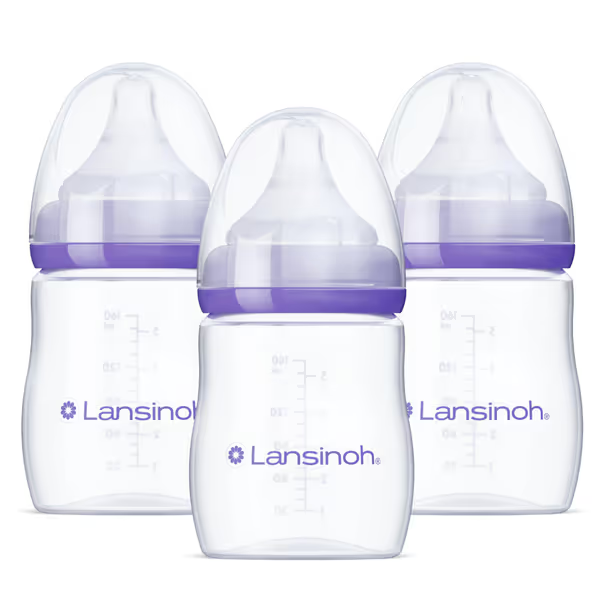
Breastfed Baby Bottle Success: Simple Transition Steps

Late-night feedings hit different when your breastfed baby suddenly refuses the bottle. You've got daycare deadlines looming, but every attempt ends in tears. Finding the best bottle for breastfed infant comfort and mastering the nursing to bottle transition shouldn't feel like solving a puzzle at 3 a.m. Let's fix that with steps that actually work for exhausted caregivers.
I've been there (sticky notes on the floor mapping every detail) until we found what worked. Clear steps beat midnight improvisation every time. When sleep is scarce, simplicity saves sanity.
1. Timing Matters: Choose the Right Moment (5 minutes, Easy)
Start when breastfeeding is established but before emergencies hit. The best time to introduce the bottle is:
- 4-6 weeks old (if breastfeeding is going well)
- When baby is calm but alert (not starving)
- During a non-primary feeding (like a midday snack)
Shrink the choices, follow the steps, breathe through feeds. Rushing creates resistance.
Introduce slowly, just 1-2 ounces at the first practice session. This prevents waste and builds confidence. Wait until your supply is stable before adding bottles. If returning to work, begin 2 weeks prior with one test feed daily.

2. Match the Flow: Test Nipple Speeds (10 minutes, Medium)
Avoiding nipple confusion starts with flow matching, not nipple shape. For a deeper dive into nipple shapes and flow rates, including when to size up, see our complete guide. "Slow" means different things across brands. Test this way:
- Hold the bottle upside down
- Milk should drip slowly (about 1 drop per second)
- If it streams, flow is too fast
- If nothing comes, too slow
Start with extra-slow flow even if labeled "newborn." Many breastfed babies need slower than store shelves suggest. A great bottle feeding experience happens when the milk pace matches your baby's natural rhythm, not when you're chasing drips.
3. Paced Feeding Technique (7 minutes, Medium)
Hold your baby upright at 45 degrees. Tilt the bottle horizontally so milk only enters when baby actively sucks. Pause every 30-60 seconds to burp or switch sides. This closely mimics breastfeeding rhythm.
Key actions:
- Wait for baby's cue to continue
- Keep the bottle mostly horizontal
- Offer breaks every 30 mL
- Switch arms midway through
This method prevents gulping and reduces gas (the #1 reason for bottle refusal during nursing to bottle transition). Track intake: 30-60 mL per session initially.
4. Caregiver Swap Strategy (3 minutes, Easy)
Your baby associates you with breastfeeding. Have someone else offer the first few bottles. Dad, grandma, or your partner often gets better acceptance rates. Why this works:
- Removes scent/smell confusion
- Eliminates expectation of breast
- Reduces caregiver stress
Stay nearby but out of sight during these introductory feeds. Reintroduce yourself only after baby accepts the bottle consistently from others.

Lansinoh Anti-Colic Baby Bottles
5. Build a Reliable Pump and Bottle Schedule (15 minutes, Medium)
Sync pumping with natural dips in supply (usually late afternoon). Example pump and bottle schedule:
- 8:00 AM: Morning breastfeed
- 11:00 AM: Pump session (store milk)
- 2:00 PM: Bottle feed (someone else offers)
- 5:00 PM: Pump session
- 8:00 PM: Breastfeed
Start with one bottle feed daily. Increase only when baby accepts it calmly. Track what works in a simple log:
| Time | Volume | Flow Rate | Reaction |
|---|---|---|---|
| 2 PM | 30 mL | Extra-slow | Accepted |
This prevents guesswork during chaotic days. Consistency trumps volume (small, reliable feeds build trust).
6. Troubleshooting Common Refusal (Varies, Medium)
When baby rejects the bottle:
- If coughing/choking: Flow too fast → try slower nipple
- If falling asleep: Flow too slow → gently squeeze bottle
- If turning away: Offer during playtime (distraction feed)
- If arching back: Check for gas → burp more often
Stop after 15 minutes. Never force. Try again in 2 hours. Most refusals fix within 3-5 attempts when you match baby's natural pace.
The moment we matched nipple flow to our baby's pace, the crying eased. Simple steps beat midnight improvisation every time.

7. Transition Timeline Cheat Sheet
Week 1
- 1 practice feed daily (2-3 oz)
- Alternate caregivers offering bottle
- Use paced feeding every time
Week 2
- Add second bottle session
- Increase volume to 4-5 oz
- Introduce backup bottle type
Week 3+
- Full schedule integration
- Adjust flow as baby grows
- Maintain one breastfeed daily if possible
Growth spurts (6 weeks, 3 months) may require flow adjustments. Stick to your log. It shows patterns sleep-deprived brains miss.
Your Action Plan Starts Now
Tonight, pick just ONE step to implement tomorrow. Maybe it's testing nipple flow speeds or scheduling that first practice feed. Document what happens, even if it fails. Small data points build your personalized roadmap.
Shrink the choices, follow the plan, then breathe. Tomorrow's feeding doesn't need perfect, it just needs one less variable to manage. That's how transitions stick when you're running on fumes.
Remember: This isn't a test of your parenting. It's a technical adjustment. Ask your pediatrician about concerns, but trust your instincts when it comes to what soothes your baby.
Related Articles

